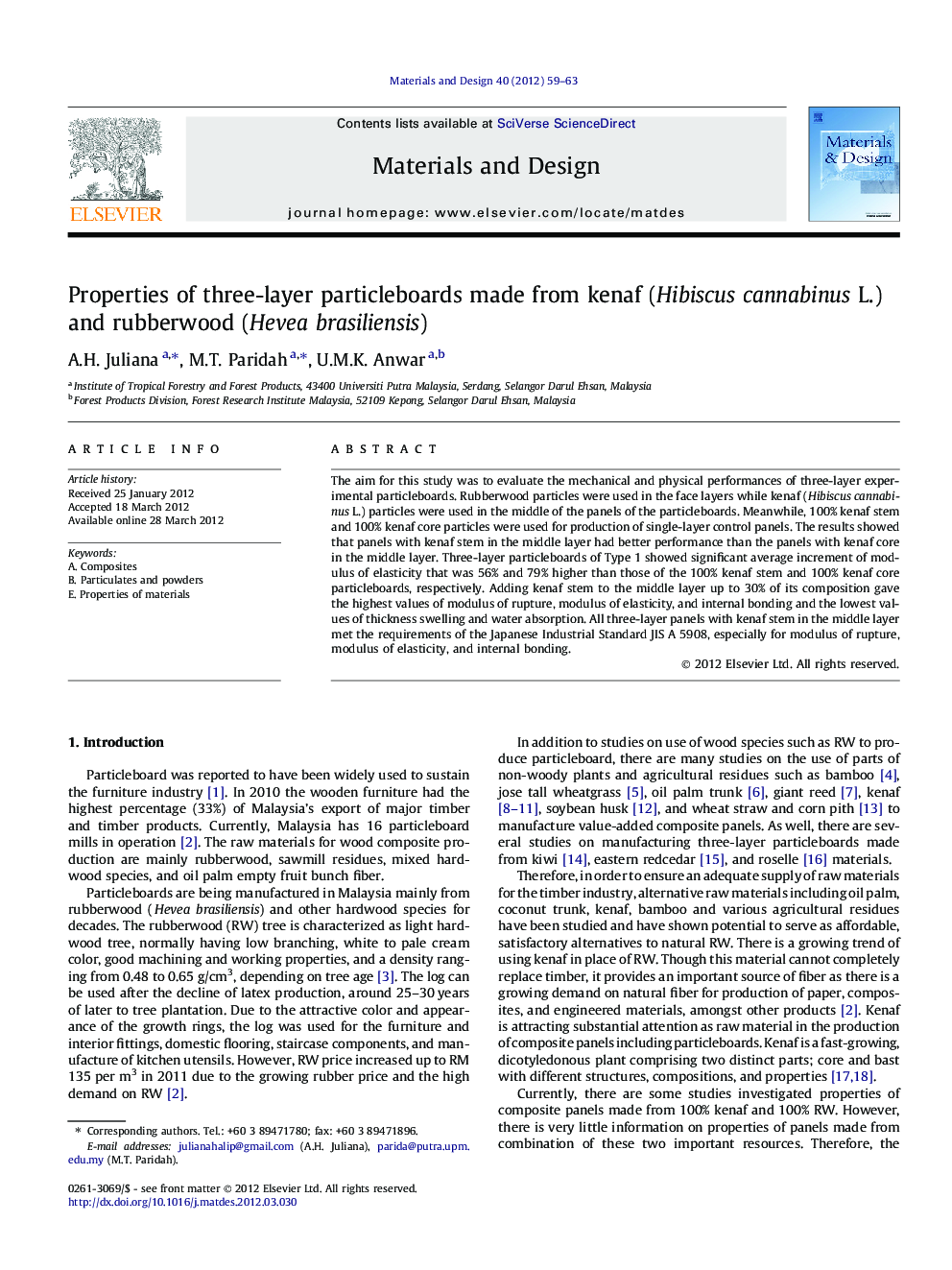| Article ID | Journal | Published Year | Pages | File Type |
|---|---|---|---|---|
| 830574 | Materials & Design (1980-2015) | 2012 | 5 Pages |
The aim for this study was to evaluate the mechanical and physical performances of three-layer experimental particleboards. Rubberwood particles were used in the face layers while kenaf (Hibiscus cannabinus L.) particles were used in the middle of the panels of the particleboards. Meanwhile, 100% kenaf stem and 100% kenaf core particles were used for production of single-layer control panels. The results showed that panels with kenaf stem in the middle layer had better performance than the panels with kenaf core in the middle layer. Three-layer particleboards of Type 1 showed significant average increment of modulus of elasticity that was 56% and 79% higher than those of the 100% kenaf stem and 100% kenaf core particleboards, respectively. Adding kenaf stem to the middle layer up to 30% of its composition gave the highest values of modulus of rupture, modulus of elasticity, and internal bonding and the lowest values of thickness swelling and water absorption. All three-layer panels with kenaf stem in the middle layer met the requirements of the Japanese Industrial Standard JIS A 5908, especially for modulus of rupture, modulus of elasticity, and internal bonding.
► We evaluate the properties of three-layer experimental particleboards. ► Panels with kenaf stem in the middle layer gave better performances. ► Panel Type 1 showed significant average increment on elasticity compared to control. ► Increasing of rubberwood particles on the surface increased the strength of panels.
